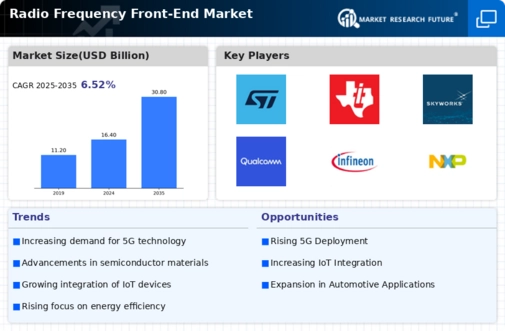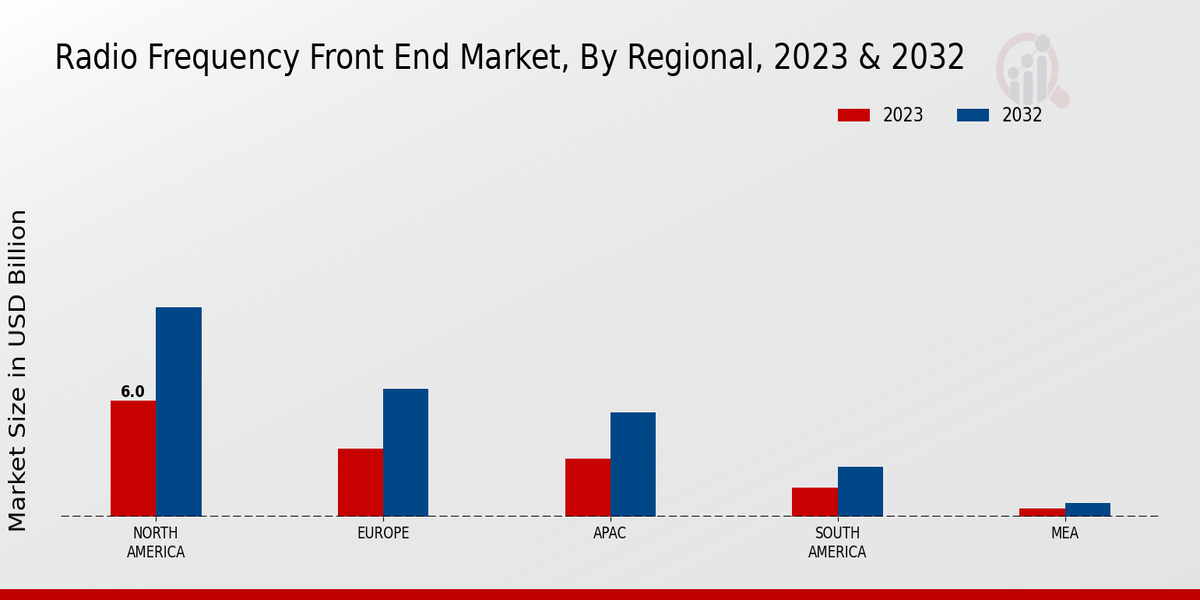Emergence of Smart Cities
The development of smart cities is creating new opportunities for the Radio Frequency Front-End Market. As urban areas increasingly adopt smart technologies for improved efficiency and sustainability, the need for robust RF front-end solutions becomes apparent. Smart city initiatives often rely on IoT devices, which require effective communication systems. The market for smart city technologies is expected to exceed 1 trillion by 2025, indicating a substantial demand for RF components that can support the vast network of connected devices. This trend highlights the potential for growth within the Radio Frequency Front-End Market as cities invest in infrastructure to enhance urban living.
Advancements in 5G Technology
The rollout of 5G technology is significantly influencing the Radio Frequency Front-End Market. With its promise of higher data rates, reduced latency, and enhanced connectivity, 5G is driving the demand for advanced RF front-end components. The market for 5G infrastructure is expected to reach approximately 700 billion by 2026, highlighting the critical role of RF front-end solutions in enabling this next-generation technology. As telecom operators invest heavily in 5G networks, the Radio Frequency Front-End Market is poised for substantial growth, as it provides the necessary components to support the increased frequency bands and complex modulation schemes associated with 5G.
Growth of Automotive Electronics
The expansion of automotive electronics is emerging as a significant driver for the Radio Frequency Front-End Market. With the rise of connected and autonomous vehicles, the demand for RF components that facilitate communication between vehicles and infrastructure is increasing. The automotive sector is projected to invest over 50 billion in connected car technologies by 2025, which includes RF front-end solutions for vehicle-to-everything (V2X) communication. This trend suggests that the Radio Frequency Front-End Market will experience heightened demand as automotive manufacturers seek to integrate advanced RF technologies into their vehicles to enhance safety and connectivity.
Increased Focus on Consumer Electronics
The rising focus on consumer electronics is a notable driver of the Radio Frequency Front-End Market. As consumers demand more advanced features in their electronic devices, manufacturers are compelled to integrate sophisticated RF front-end solutions. The consumer electronics market is projected to grow significantly, with estimates suggesting it could reach 1.5 trillion by 2026. This growth is likely to spur innovation in RF technologies, as companies strive to deliver high-quality audio and video experiences, seamless connectivity, and enhanced functionality. Consequently, the Radio Frequency Front-End Market is expected to benefit from this trend as it aligns with the evolving preferences of consumers.
Rising Demand for Wireless Communication
The increasing demand for wireless communication technologies is a primary driver of the Radio Frequency Front-End Market. As more devices become interconnected, the need for efficient RF front-end solutions grows. The proliferation of smartphones, IoT devices, and smart home technologies has led to a surge in the requirement for high-performance RF components. According to recent data, the number of connected devices is projected to reach over 30 billion by 2025, necessitating advanced RF front-end solutions to support seamless connectivity. This trend indicates a robust growth trajectory for the Radio Frequency Front-End Market, as manufacturers strive to meet the evolving needs of consumers and businesses alike.
















Leave a Comment